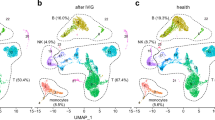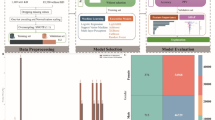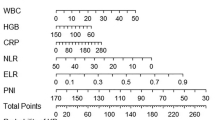Abstract
Background:
The mechanisms underpinning Kawasaki disease (KD) are incompletely understood. There is an unmet need for specific biomarkers for the early diagnosis of KD.
Methods:
Eighty-five KD patients suffering from acute-phase and subacute-phase KD, 40 healthy children, and 40 febrile children comprised the study cohort. An enzyme-linked immunosorbent assay was used to measure plasma levels of C1q, C1q-circulating immune complex (C1q-CIC), mannan-binding lectin-associated serine protease (MASP)-1, factor B, C4d, C3d, C5a, C5b-9 and CD59.
Results:
Plasma concentrations of factor B and C5a in the acute phase were lower than those in healthy and febrile control groups (all P < 0.05). Compared with acute-phase KD patients, plasma concentrations of C1q, factor B, and C3d in KD patients were increased significantly (P < 0.05), but those of C4d, MASP-1 and CD59 decreased significantly (P < 0.05), in patients with sub-acute KD.
Conclusion:
These data suggest that more than one pathway in the complement system is activated in KD. Importantly, decreased plasma concentrations of factor B and C5a in the acute phase (6–10 d) could be employed as biomarkers for the early diagnosis of KD.
Similar content being viewed by others
Log in or create a free account to read this content
Gain free access to this article, as well as selected content from this journal and more on nature.com
or
References
Burns JC, Shike H, Gordon JB, Malhotra A, Schoenwetter M, Kawasaki T. Sequelae of Kawasaki disease in adolescents and young adults. J Am Coll Cardiol 1996;28:253–7.
Alexoudi I, Kanakis M, Kapsimali V, Vaiopoulos G. Kawasaki disease: current aspects on aetiopathogenesis and therapeutic management. Autoimmun Rev 2011;10:544–7.
Meri S. Complement activation in diseases presenting with thrombotic microangiopathy. Eur J Intern Med 2013;24:496–502.
Oksjoki R, Kovanen PT, Meri S, Pentikainen MO. Function and regulation of the complement system in cardiovascular diseases. Front Biosci 2007;12:4696–708.
Lewis MJ, Malik TH, Fossati-Jimack L, et al. Distinct roles for complement in glomerulonephritis and atherosclerosis revealed in mice with a combination of lupus and hyperlipidemia. Arthritis Rheum 2012;64:2707–18.
Haydey RP, Patarroyo de Rojas M, Gigli I. A newly described control mechanism of complement activation in patients with mixed cryoglobulinemia (cryoglobulins and complement). J Invest Dermatol 1980;74:328–32.
Ishikawa T, Iwashima S. Endothelial dysfunction in children within 5 years after onset of Kawasaki disease. J Pediatr 2013;163:1117–21.
Ando T, Nagai K, Chikada M, et al. Proteomic analyses of aortic wall in patients with abdominal aortic aneurysm. J Cardiovasc Surg (Torino) 2011;52:545–55.
Chimenti MS, Ballanti E, Triggianese P, et al. Vasculitides and the complement system: a comprehensive review. Clin Rev Allergy Immunol E-pub ahead of print 15 Oct 2014.
Kohsaka T, Abe J, Asahina T, Kobayashi N. Classical pathway complement activation in Kawasaki syndrome. J Allergy Clin Immunol 1994;93:520–5.
Nakamura A, Okigaki M, Miura N, et al. Involvement of mannose-binding lectin in the pathogenesis of Kawasaki disease-like murine vasculitis. Clin Immunol 2014;153:64–72.
Moroni G, Trendelenburg M, Del Papa N, et al. Anti-C1q antibodies may help in diagnosing a renal flare in lupus nephritis. Am J Kidney Dis 2001;37:490–8.
Salo E, Kekomäki R, Pelkonen P, Ruuskanen O, Viander M, Wagner O. Kawasaki disease: monitoring of circulating immune complexes. Eur J Pediatr 1988;147:377–80.
Furuse A, Matsuda I. Circulating immune complex in the mucocutaneous lymph node syndrome. Eur J Pediatr 1983;141:50–1.
Mason WH, Jordan SC, Sakai R, Takahashi M, Bernstein B. Circulating immune complexes in Kawasaki syndrome. Pediatr Infect Dis 1985;4:48–51.
Degn SE, Jensen L, Hansen AG, et al. Mannan-binding lectin-associated serine protease (MASP)-1 is crucial for lectin pathway activation in human serum, whereas neither MASP-1 nor MASP-3 is required for alternative pathway function. J Immunol 2012;189:3957–69.
Megyeri M, Makó V, Beinrohr L, et al. Complement protease MASP-1 activates human endothelial cells: PAR4 activation is a link between complement and endothelial function. J Immunol 2009;183:3409–16.
Matsushita M, Fujita T. Activation of the classical complement pathway by mannose-binding protein in association with a novel C1s-like serine protease. J Exp Med 1992;176:1497–502.
Murata K, Baldwin WM 3rd . Mechanisms of complement activation, C4d deposition, and their contribution to the pathogenesis of antibody-mediated rejection. Transplant Rev (Orlando) 2009;23:139–50.
van der Touw W, Cravedi P, Kwan WH, Paz-Artal E, Merad M, Heeger PS. Cutting edge: Receptors for C3a and C5a modulate stability of alloantigen-reactive induced regulatory T cells. J Immunol 2013;190:5921–5.
Oppermann M, Götze O. Plasma clearance of the human C5a anaphylatoxin by binding to leucocyte C5a receptors. Immunology 1994;82:516–21.
Gorter A, Blok VT, Haasnoot WH, Ensink NG, Daha MR, Fleuren GJ. Expression of CD46, CD55, and CD59 on renal tumor cell lines and their role in preventing complement-mediated tumor cell lysis. Lab Invest 1996;74:1039–49.
Newburger JW, Takahashi M, Gerber MA, et al.; Committee on Rheumatic Fever, Endocarditis, and Kawasaki Disease, Council on Cardiovascular Disease in the Young, American Heart Association. Diagnosis, treatment, and long-term management of Kawasaki disease: a statement for health professionals from the Committee on Rheumatic Fever, Endocarditis, and Kawasaki Disease, Council on Cardiovascular Disease in the Young, American Heart Association. Pediatrics 2004;114:1708–33.
Acknowledgements
We thank the patients and their families for participating in this study.
Author information
Authors and Affiliations
Corresponding author
Rights and permissions
About this article
Cite this article
Zou, QM., Li, XH., Song, RX. et al. Early decreased plasma levels of factor B and C5a are important biomarkers in children with Kawasaki disease. Pediatr Res 78, 205–211 (2015). https://doi.org/10.1038/pr.2015.81
Received:
Accepted:
Published:
Issue date:
DOI: https://doi.org/10.1038/pr.2015.81



